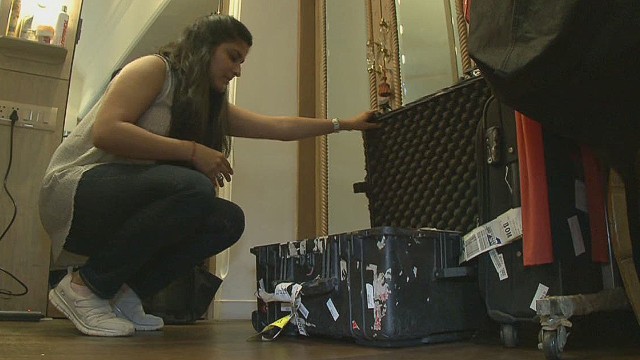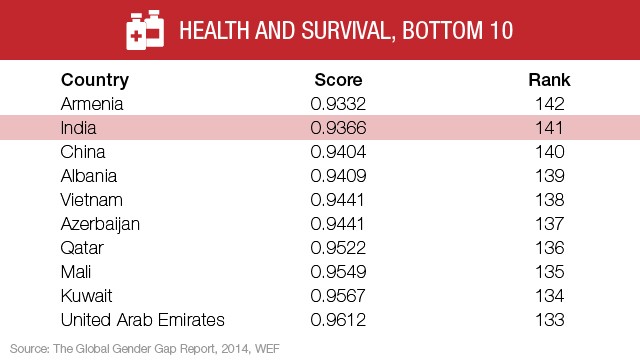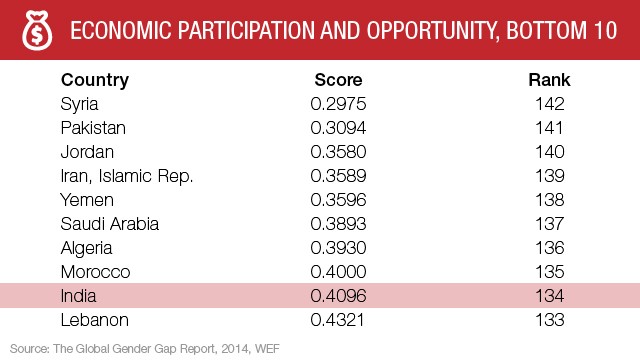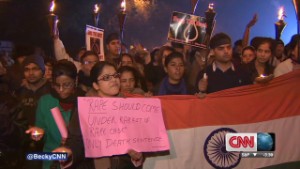Poor treatment of women points to India's widening gender gap
October 28, 2014 -- Updated 0830 GMT (1630 HKT)

Bollywood: Women do hair, men do make-up
STORY HIGHLIGHTS
- World Economic Forum's new Gender Gap Index gives India a dismal scorecard
- 134th out of 142 in the world for economic opportunities; 126th for educational attainment
- Women are born at a disadvantage, enjoying far few opportunities than men
- Gender gap may help to explain poor treatment of women, including issues such as security, rape
Editor's note: Ravi Agrawal is CNN's New Delhi Bureau chief. Follow him on Twitter @RaviAgrawalCNN. The opinions expressed in this commentary are solely those of the author.
New Delhi (CNN) -- Every five minutes a woman in
India is compelled to visit a police station and report a case of
cruelty -- usually one committed by her own husband or family.
Every ten minutes a woman in India reports assault. Every 21 minutes one of them reports a rape.
The numbers are no secret: you can do the math from the National Crime Records Bureau yourself.
The total number of these
assorted cases has increased in each of the last five documented years,
making for a 25% jump over this period.
But the numbers don't
tell the complete truth. At the very least, they are frequently
misrepresented. With each high profile rape in India -- sensationally
reported in national and sometimes international media -- the increased
number of reported crimes is cited as an example of how the incidence
rape in India is on a steep upward curve.
 Health: Top 10 nations
Health: Top 10 nations Economic participation: Top 10 nations
Economic participation: Top 10 nations
But it's a lazy
correlation. In reality, we don't really know that the number of cases
of rape are on the rise. All we know is that more women are reporting
these crimes -- perhaps, in part, because of the spotlight on them.
Either way, the number of women not reporting rapes and other crimes is a
far bigger statistic -- many are undocumented, brushed under the
carpet, forgotten.
The crimes, as always,
begin at home. It should be no surprise to read about the physical
crimes reported and recorded by the National Crime Records Bureau.
Gender gap
How do we explain why
India has so many cases? There are likely a number of complex
sociological factors but there's not much hard data. One useful
indicator of the safety of Indian women is to look at how they compare
globally on freedom. The World Economic Forum's new Gender Gap Index gives India a dismal scorecard -- worse than in previous years.
India's women rank 134th
in the world (out of 142 countries) for economic opportunities; they
place 126th in the world for educational attainment; 141st in the world
for health and survival. These are all basic rights that would empower
them, make them less likely to be silent victims.
Demographic, economic indicators
-- GDP (US$ billions): 1,458.74
-- GDP (PPP) per capita (constant 2011, international $): 5,050
-- Total population (millions): 1,252.14
-- Population growth (%): 1.24
-- Overall population sex ratio (male/female): 1.07
(Source: WEF)
-- GDP (US$ billions): 1,458.74
-- GDP (PPP) per capita (constant 2011, international $): 5,050
-- Total population (millions): 1,252.14
-- Population growth (%): 1.24
-- Overall population sex ratio (male/female): 1.07
(Source: WEF)
The only parameter India
performs well on is on having a female head of state or government,
where it ranks a surprising first. But the parameter itself is flawed.
In 15 of the 21 years the study counts, Indira Gandhi was prime
minister.
History will hardly portray Gandhi's achievements
as solely a triumph for Indian women; her victory and the length of her
rule was also a triumph of her lineage (Gandhi's father was Jawaharlal
Nehru, India's first prime minister. She shared no relation to the
legendary Mahatma Gandhi, but her surname -- acquired through marriage
-- didn't hurt.)
A more reliable
indicator of the political empowerment of India's women is how it places
111th in the world for electing female parliamentarians, and 107th in
the world for voting in female ministers.
Born at a disadvantage
Why the sorry state of India's women? Why are they so far behind?
The sad reality is that it begins before women are even born. According to India's census,
there are 940 women for every 1,000 men. In part, the difference exists
because of decades of female infanticide -- the practice where families
abort fetuses on discovering their sex. When girls are born, they're
born with the promise of a second class life. While men enjoy a literacy
rate of 82%, only 65% of Indian women can read or write. Girls in India
have long been considered a burden, a cause for losing money in
marriages and dowries.
 Do women feel safe in India?
Do women feel safe in India?
 India's missing women
India's missing women
Data and anecdotes alike
show that Indian women have been unwanted and unloved for decades.
Consider how families pressure their daughters-in-law for baby boys, not
girls.
Consider how in rural
India, many Indian parents mistreat their daughters-in-law, demanding
dowries, mothers-in-law meting out the same discrimination they were
once subjected to. An overwhelming 43% of crimes reported by Indian
women are acts of cruelty committed by their own families. Millions of
Indians -- men and women -- are complicit.
The discrimination
continues at a policy level: marital rape is still not considered a
crime in India. Local governments and police remain poorly equipped to
process crimes against women -- let alone doing so in a sensitive
manner.
So why are many shocked by India's abysmal statistics on crimes against women?
The crimes, as always,
begin at home. It should be no surprise to read about the physical
crimes reported and recorded by the National Crime Records Bureau. What
is surprising is how generations of Indians have stood by as their
mothers, sisters, and daughters have been left behind on every indicator
of quality of life; they have been denied the chance for basic
equality.
The WEF report makes for
illuminating reading, and signposts where India needs to go to fully
realize the potential of its 600 million female inhabitants.

ไม่มีความคิดเห็น:
แสดงความคิดเห็น